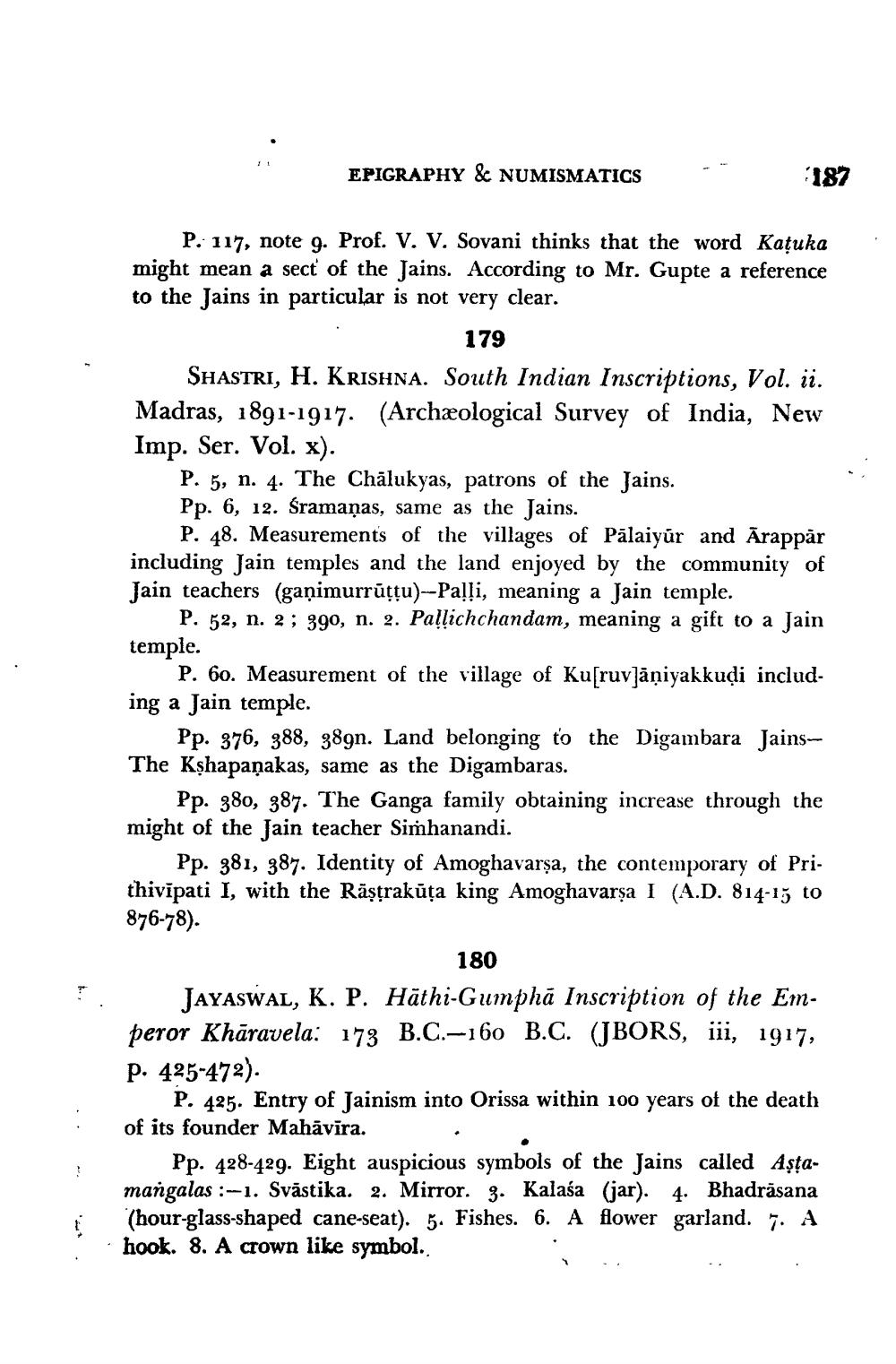________________
EPIGRAPHY & NUMISMATICS
187
P. 117, note 9. Prof. V. V. Sovani thinks that the word Kațuka might mean a sect' of the Jains. According to Mr. Gupte a reference to the Jains in particular is not very clear.
179 SHASTRI, H. KRISHNA. South Indian Inscriptions, Vol. ii. Madras, 1891-1917. (Archäological Survey of India, New Imp. Ser. Vol. x).
P. 5, n. 4. The Chālukyas, patrons of the Jains. Pp. 6, 12. Śramaņas, same as the Jains.
P. 48. Measurements of the villages of Pālaiyur and Ārappār including Jain temples and the land enjoyed by the community of Jain teachers (gaņimurrūțţu)--Palli, meaning a Jain temple.
P. 52, n. 2 ; 390, n. 2. Pallichchandam, meaning a gift to a Jain
temple.
P. 60. Measurement of the village of Ku[ruv]āņiyakkuļi including a Jain temple.
Pp. 376, 388, 38gn. Land belonging to the Digambara JainsThe Kșhapaņakas, same as the Digambaras.
Pp. 380, 387. The Ganga family obtaining increase through the might of the Jain teacher Simhanandi.
Pp. 381, 387. Identity of Amoghavarşa, the contemporary of Prithivipati I, with the Rāşțrakūta king Amoghavarşa I (A.D. 814-15 to 876-78).
180 JAYASWAL, K. P. Hāthi-Gumpha Inscription of the Emperor Khāravela: 173 B.C.-160 B.C. (JBORS, iii, 1917, P. 425-472).
P. 425. Entry of Jainism into Orissa within 100 years of the death of its founder Mahavira.
Pp. 428-429. Eight auspicious symbols of the Jains called Astamangalas :--1. Svāstika. 2. Mirror. 3. Kalasa (jar). 4. Bhadrāsana
(hour-glass-shaped cane-seat). 5. Fishes. 6. A flower garland. 7. A -hook. 8. A crown like symbol..
į




